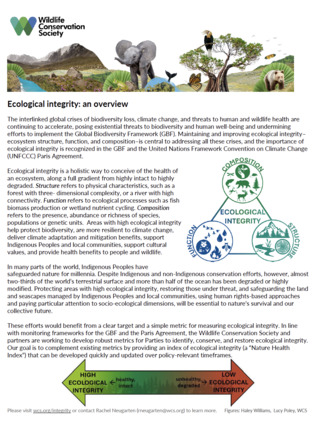Ecosystem Integrity
Integrity is the degree to which an ecosystem’s composition, structure, and function are similar to its natural or reference state.
WCS has conservation programs on the ground and in the water in more than 60 countries. We know firsthand that biodiversity is complex, and that not all ecosystems are the same.
Forests, coral reefs, and other ecosystems exist on a spectrum of condition, called “ecological integrity." Integrity refers to an ecosystem's overall condition in relation to a natural or reference state.
We can measure integrity directly, by measuring a given ecosystem’s composition, structure, and function; or estimate it indirectly, by measuring human activities known to degrade or destroy ecosystems.
Integrity determines the value of ecosystems for biodiversity, and for people. Highly intact ecosystems support more biodiversity, absorb more carbon, help prevent pathogen spillover, and provide food and livelihoods for local communities.
Learn more about the concept and its use in international policy in our FAQ,
POST-2020 TARGETS FOR BIODIVERSITY
Ecosystem integrity is appropriately emphasized in some goals and targets in the July 2021 Draft 1 of the post-2020 global biodiversity framework, currently being negotiated under the Convention on Biological Diversity.
Read more about what's needed for the current draft biodiversity goals and targets in our recommendations on Draft 1 of the GBF (below) and learn more at wcs.org/cbd.
Sign Up for Email Updates
Get news from the field and learn about ways you can help Earth’s most threatened species.


